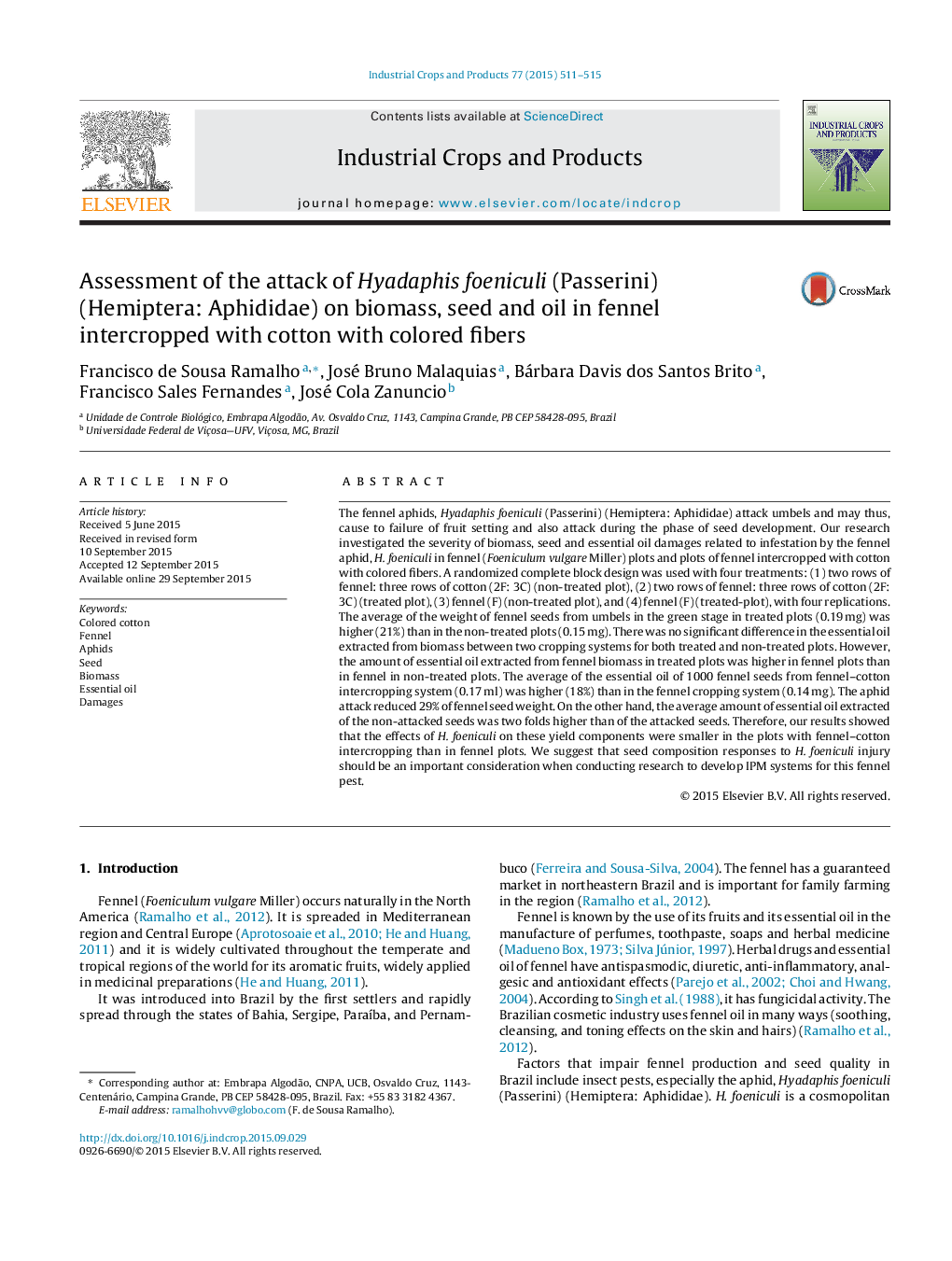| Article ID | Journal | Published Year | Pages | File Type |
|---|---|---|---|---|
| 4512609 | Industrial Crops and Products | 2015 | 5 Pages |
•It is first study the response of fennel seeds to attack of aphids, Hyadaphis foeniculi (Passerini) (Hemiptera: Aphididae).•The intercropping of fennel with cotton with colored fibers reduced the impact of aphids on the oil content of fennel.•The aphids reduced the amount of essential oil in the fennel seeds.•There was no difference in the essential oil from biomass between two cropping systems for treated and non-treated plots.•The aphids do not reduce the amount of essential oil in the fennel biomass.
The fennel aphids, Hyadaphis foeniculi (Passerini) (Hemiptera: Aphididae) attack umbels and may thus, cause to failure of fruit setting and also attack during the phase of seed development. Our research investigated the severity of biomass, seed and essential oil damages related to infestation by the fennel aphid, H. foeniculi in fennel (Foeniculum vulgare Miller) plots and plots of fennel intercropped with cotton with colored fibers. A randomized complete block design was used with four treatments: (1) two rows of fennel: three rows of cotton (2F: 3C) (non-treated plot), (2) two rows of fennel: three rows of cotton (2F: 3C) (treated plot), (3) fennel (F) (non-treated plot), and (4) fennel (F) (treated-plot), with four replications. The average of the weight of fennel seeds from umbels in the green stage in treated plots (0.19 mg) was higher (21%) than in the non-treated plots (0.15 mg). There was no significant difference in the essential oil extracted from biomass between two cropping systems for both treated and non-treated plots. However, the amount of essential oil extracted from fennel biomass in treated plots was higher in fennel plots than in fennel in non-treated plots. The average of the essential oil of 1000 fennel seeds from fennel–cotton intercropping system (0.17 ml) was higher (18%) than in the fennel cropping system (0.14 mg). The aphid attack reduced 29% of fennel seed weight. On the other hand, the average amount of essential oil extracted of the non-attacked seeds was two folds higher than of the attacked seeds. Therefore, our results showed that the effects of H. foeniculi on these yield components were smaller in the plots with fennel–cotton intercropping than in fennel plots. We suggest that seed composition responses to H. foeniculi injury should be an important consideration when conducting research to develop IPM systems for this fennel pest.
